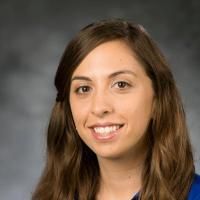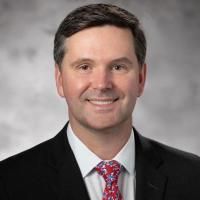Patterns of inpatient care for prostate cancer in men with spina bifida.
Date
2020-04
Journal Title
Journal ISSN
Volume Title
Repository Usage Stats
views
downloads
Citation Stats
Abstract
BACKGROUND:Advances in medical care have increased the long-term survival of patients with spina bifida. Despite this growing population, limited knowledge is available on age-related illnesses in adults with spina bifida, particularly prostate cancer for which there is no published data. OBJECTIVE:Our aim was to describe inpatient care for prostate cancer in men with spina bifida in the United States. METHODS:We performed a descriptive, retrospective study utilizing the 1998 to 2014 National Inpatient Sample from the Healthcare Cost and Utilization Project. Weights were applied to the sample to make national level inferences. We identified all adult encounters (≥18 years old) with prostate cancer and spina bifida. RESULTS:We identified 253 encounters (mean age 64.9 years). Most were Caucasian (67.5%) and had public insurance (61.6%). 44% of encounters included a major urologic procedure. 38.4% of encounters included prostatectomies, 28.3% included lymph node dissections, and 7.8% included cystectomies. Robotic surgery was performed in 9.4%. Mean length of stay was 5.6 days (95% CI: 3.7, 7.5). The average total cost was $14,074 (95% CI: $8990.3, $19,158.6). CONCLUSIONS:In this first-ever exploration of inpatient care for prostate cancer in men with spina bifida, we found that length of stay and total costs were higher in men with spina bifida. Almost half of encounters included a prostatectomy, cystectomy, and/or lymph node dissection. More detailed investigations are necessary to assess comparative treatment outcomes and complications, including prevalence and mortality rates of prostate cancer among adult men with SB.
Type
Department
Description
Provenance
Citation
Permalink
Published Version (Please cite this version)
Publication Info
Johnston, Ashley W, Steven Wolf, Muhammad H Alkazemi, Gina-Maria Pomann, Hadley Wood, John S Wiener and Jonathan C Routh (2020). Patterns of inpatient care for prostate cancer in men with spina bifida. Disability and health journal, 13(2). p. 100866. 10.1016/j.dhjo.2019.100866 Retrieved from https://hdl.handle.net/10161/20589.
This is constructed from limited available data and may be imprecise. To cite this article, please review & use the official citation provided by the journal.
Collections
Scholars@Duke

Gina-Maria Pomann
Dr. Pomann is a biostatistician and educator with extensive research, leadership, and administrative experience. Her methodological contributions include the development of novel statistical methodology and predictive modeling techniques with applications to functional data and brain imaging. Collaborating with investigators across biomedical fields, Dr. Pomann has published in areas such as Surgery, Urology, and Hospital Medicine, among others. To support the development of efficient and effective data-intensive research across the biomedical sciences, Dr. Pomann’s primary research focuses on the science of team science. She works with collaborators with diverse scientific expertise to develop administrative structures, scientific operational processes, methods for organizing quantitative collaboration units, and workforce development programs.
Dr. Pomann currently serves as an Associate Professor of Biostatistics and Bioinformatics and is the Director of the Biostatistics, Epidemiology, and Research Design (BERD) Methods Core, a group of faculty and staff with diverse quantitative expertise (biostatisticians, data scientists, bioinformaticians, clinical informaticians, epidemiologists, etc.) contributing to groundbreaking research in clinical and translational domains. She has directed the development and management of 30 collaboration teams comprising biostatistics staff, faculty, and students. She has successfully developed collaboration teams across various medical fields, partnering with entities such as the Department of Pediatrics, the Global Health Institute, and the Department of Neurosurgery, to name a few. The programs she directs have helped over 1100 investigators identify appropriate collaborators with quantitative expertise and have led to the co-authorship of more than 550 collaborative manuscripts by quantitative staff and faculty within the BERD Core. More information about BERD can be found on our website: https://biostat.duke.edu/berd-methods-core .
In addition to building innovative processes and organizational structures to facilitate collaborations to drive data-intensive research, Dr. Pomann leads numerous workforce development programs for quantitative scientists. She develops processes and best practices to accelerate science and meet the evolving needs of data-driven clinical and translational research. Dr. Pomann developed the BERD Core Training and Internship Program (BCTIP), to provide a hands-on collaboration experience for Masters of Biostatistics students at Duke. She also oversees the Duke AI Health Fellowship Program, a two-year post graduate training program in data science and AI in Healthcare. Dr. Pomann is also MPI of an R25 titled "Quantitative Methods for HIV/AIDS Research" facilitating internships for quantitative students as well as a mentored scholars program and workshop series for biomedical investigators. Dr. Pomann holds a joint appointment at Duke National University of Singapore which allows her to develop training programs for the international workforce. The programs she directs have supported and trained more than 40 staff, and 100 student interns to engage in data-intensive biomedical research.

John Samuel Wiener
As a general pediatric urologist, Dr. Wiener is involved with all aspects of pediatric urology as a clinician and researcher. His research interests are most focused, however, on the urologic management of neurogenic bladder and spina bifida and the molecular biology involving development of the genitourinary tract and disorders.
Dr. Wiener is the principal investigator at Duke for The National Spina Bifida Patient Registry and Urologic Management of Young Children with Spina Bifida protocol administered by the Centers for Disease Control and Prevention. These projects began at Duke in 2011 and 2015, respectively.
Dr. Wiener was previously a project director for the P50 Center for Undiagnosed Pediatric and Urogenital Disorders.
Dr. Wiener has served in national leadership positions in pediatric urology including President of the Society of Fetal Urology, Executive Council of Society for Pediatric Urology, and the Examination Committee of the American Board of Urology. He is currently on the Board of Directors of the Spina Bifida Association

Jonathan Charles Routh
I am a pediatric urologist and health services researcher who is interested in caring for children with urological problems, conducting research on how to improve that care, and mentoring young researchers to ensure that the next generation does both better than I currently can.
My clinical interests include minimally-invasive surgery, neurogenic and non-neurogenic voiding dysfunction, complex urologic reconstruction (particularly in children with spina bifida), and pediatric urologic oncology (particularly Wilms tumor and rhabdomyosarcoma). My research has been funded by awards from the NIH, CDC, FDA, and multiple foundations and industry partners, and during my time on faculty at Duke I have had the pleasure of collaborating with many groups and individuals around the world on a number of projects. Over the past 15 years, I have formally mentored nearly 3 dozen undergraduates, medical students, urology residents, post-doctoral students, and junior faculty members across multiple disciplines (pediatrics, urogynecology, urology, and nursing).
Unless otherwise indicated, scholarly articles published by Duke faculty members are made available here with a CC-BY-NC (Creative Commons Attribution Non-Commercial) license, as enabled by the Duke Open Access Policy. If you wish to use the materials in ways not already permitted under CC-BY-NC, please consult the copyright owner. Other materials are made available here through the author’s grant of a non-exclusive license to make their work openly accessible.
